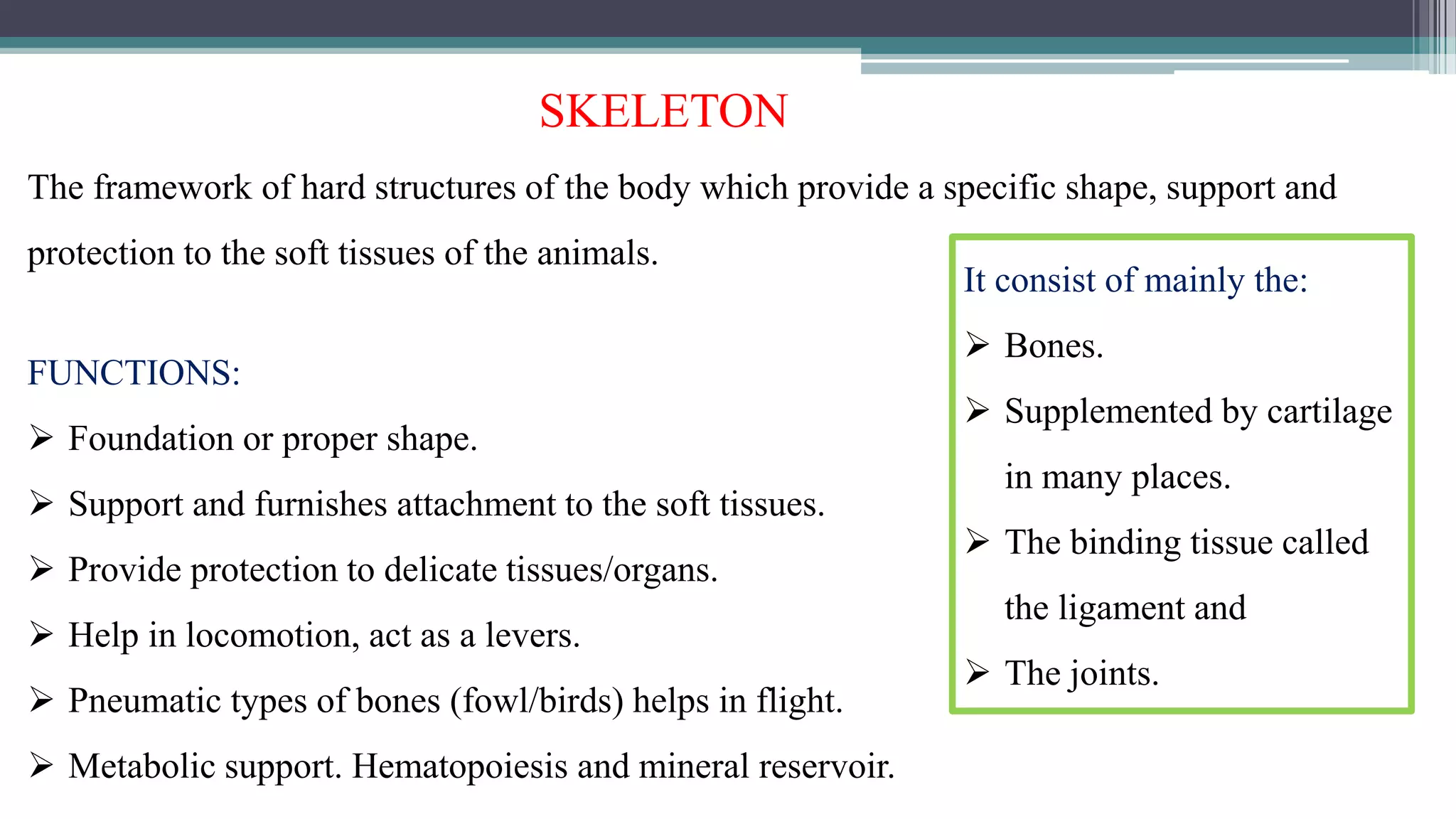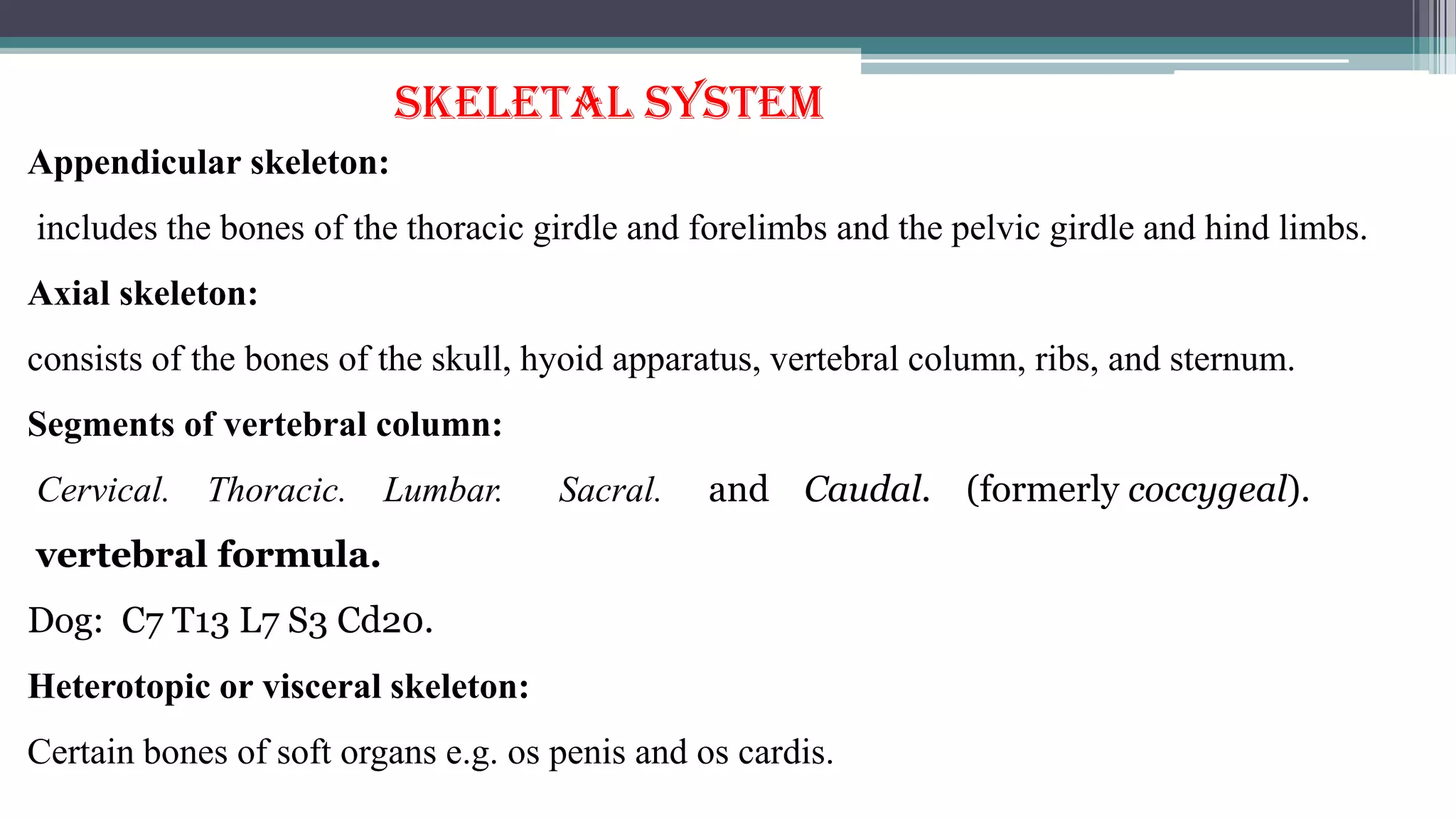The document summarizes key aspects of the locomotor system and skeleton. It describes the skeleton's main functions of providing shape, support, protection and movement. The skeleton is divided into the axial skeleton of the skull, vertebral column, ribs and sternum, and the appendicular skeleton of the limbs. Typical long bones have a shaft, ends, and growth plate. Bones are classified based on shape and composition. Key markings and structures of bones are also defined.



























